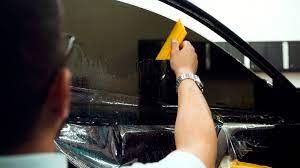Window tinting has emerged as more than smart tint just a style statement for vehicles and buildings. It’s a practical choice that offers numerous benefits, including enhanced privacy, protection from harmful UV rays, improved safety, and increased energy efficiency. In this comprehensive guide, we delve into the world of window tinting, exploring its various aspects, benefits, and considerations.
Understanding Window Tinting:
Window tinting involves applying a thin film to the interior surface of windows. This film is typically made of polyester and is available in various shades and thicknesses. The tinting process is performed by professionals using specialized tools to ensure a precise and uniform application.
Benefits of Window Tinting:
- UV Protection: Window tinting blocks up to 99% of harmful UV rays, protecting both occupants and interiors from sun damage.
- Heat Reduction: Tinted windows help regulate interior temperatures by reducing heat gain, thus improving comfort and reducing the need for excessive air conditioning.
- Glare Reduction: Tinted windows minimize glare from sunlight and headlights, enhancing visibility and reducing eye strain while driving or working indoors.
- Privacy and Security: Tinted windows provide increased privacy by limiting visibility from the outside, deterring potential thieves and intruders.
- Interior Preservation: By blocking UV rays and reducing heat, window tinting helps preserve upholstery, dashboard, and other interior components, prolonging their lifespan and maintaining their appearance.
Types of Window Tinting:
- Dyed Window Film: This type of tinting utilizes multiple layers of dye to absorb solar heat and block UV rays. It is cost-effective but may fade over time.
- Metallic Window Film: Metallic tinting incorporates metal particles to reflect heat and improve durability. However, it may interfere with electronic signals and is not suitable for all vehicles.
- Carbon Window Film: Carbon tinting offers superior heat rejection and UV protection without the drawbacks of metallic tinting. It provides a sleek appearance and minimal signal interference.
- Ceramic Window Film: Ceramic tinting is the premium option, featuring nano-ceramic particles that offer exceptional heat rejection, UV protection, and clarity. It is the most expensive but provides unmatched performance and longevity.
Considerations Before Tinting:
- Legal Regulations: Check local laws and regulations regarding window tinting, including permissible shades and light transmission levels.
- Professional Installation: Choose a reputable tinting service with experienced technicians to ensure proper installation and warranty coverage.
- Warranty and Quality: Select high-quality window tinting products with manufacturer warranties to guarantee longevity and performance.
- Maintenance: Follow recommended care instructions to maintain the appearance and functionality of tinted windows, avoiding abrasive cleaners and sharp objects that could damage the film.
Conclusion:
Window tinting offers a myriad of benefits for vehicles and buildings alike, ranging from enhanced aesthetics to improved comfort and safety. By understanding the various types of tinting, its benefits, and key considerations, individuals can make informed decisions to reap the full advantages of this versatile technology. Whether for personal vehicles, commercial properties, or residential homes, window tinting remains a practical investment that combines style, functionality, and efficiency.

